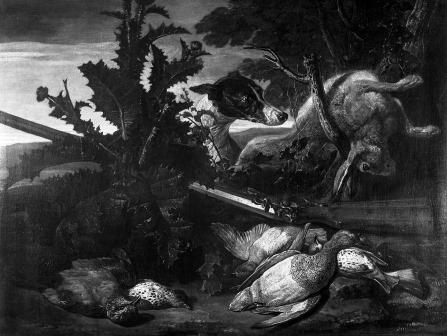Recommendation
In a letter dated 31 October 2006, the Minister for Education, Culture and Science (OCW) asked the Restitutions Committee to issue a recommendation regarding a decision to be taken on the application submitted on 2 October 2002 by B.E., as the authorised representative of J.A. van Brabant’s grandchildren (hereafter referred to as ‘the applicants’), concerning the restitution of the painting Hunting still life by D. de Coninck. Since its return to the Netherlands after the Second World War, the claimed object, previously attributed to J. Fyt, has been part of the Netherlands Art Property Collection (hereafter referred to as ‘NK collection’) under inventory number NK 2149. According to information provided by the Netherlands Institute for Cultural Heritage (hereafter referred to as ‘ICN’), the claimed work of art is currently on long-term loan in the Ridderzaal at the Binnenhof (Dutch Parliament building) in The Hague.
